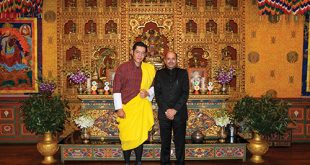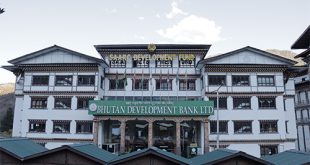A combination of the 5% GST applied on electricity and an upcoming three-year domestic power tariff review will mean higher power bills for all Bhutanese households and businesses.
Electricity had originally been exempted from the GST, but the Economic and Finance Committee (EFC) put it under the GST. It simply means that if your power bill is Nu 500 then with the 5% GST it will become Nu 525 effective from 1st January 2026.
The GST component will not impact heavy and medium voltage power consumers as those exporting their goods will get a full refund of the 5% GST on power and those selling products locally can minus it from their GST payment to the government. It will, however, impact all households. Even the first 100 units free power in rural areas will attract the 5% GST to be paid by the government as part of its subsidy.
However, before GST can come into effect, it is time to review the domestic power tariff by July 2025 as part of the three-year cycle. The Druk Green Power Corporation (DGPC) has submitted its Generation Tariff which is the cost of selling power to Bhutan Power Corporation (BPC) on the cost plus model which factors in generating costs like project cost, operation and maintenance, financing cost, etc., and a slight profit or return on equity.
BPC in turn has submitted its End-User Tariff proposal which is also based on the cost plus model like generating tariff of DGPC, operation and maintenance, financing cost etc., and return on equity.
According to sources, both the DGPC and BPC, like in the past cycles, have proposed an increase in their respective tariffs to the Electricity Regulatory Authority (ERA).
The first factor for increase is inflation, as the costs and inputs that go into the two companies are not the same as three years ago. There may also be increased operation and maintenance costs as the infrastructure ages, as well as demand for new power lines and more reliability.
Another major factor to consider is that the new hydro projects that are being commissioned have a higher generating cost since their cost of construction is higher due to inflation.
Currently, for low voltage consumers which are households, offices and businesses, the BPC tariff is Nu 1.28 for the first 100 units and Nu 2.66 per unit after that.
The DGPC average generation tariff is Nu 1.60 per unit made up of Nu 1.34 from Chukha, Tala, Kurichu and Basochu and Nu 3.64 from Mangdechu. The tariff for P II is expected to be even higher than Mangdechu.
The tariff for High Voltage (HV) and Medium Voltage (MV) is a combination of Energy Charge, which is the cost of power and Demand Charge, which is the cost of supplying power. The HV tariff right now is around Nu 2.93 per unit.
ERA will use the Tariff Determination Regulation and look at and study all the components and then come up with some figures, which will be shared with the public. ERA will then once again undertake an exercise and come up with the final domestic tariff rate based on the cost plus model of DGPC and BPC.
This final domestic tariff rate will be slapped with a 5% GST.
The government, like in the past, can use the free royalty power from hydro projects to subsidize the domestic tariff rates for Low Voltage (LV) consumers. For example, the first 100 units at 1.28 are actually subsidized in two ways. In rural areas, the government uses the Royalty power to give it for free and in urban areas the actual cost of Nu 2.66 per unit is not charged and only the reduced Nu 1.28 is charged.
ERA will take some time as the Tariff Determination Regulation is undergoing some amendments.
As on 31st December 2024, BPC has 255,517 customers which is 5.03% increase from 2023 and sold 7,125 Million Units (MU) of electricity, which is an increase by 25.23% from the last year. BPC’s energy purchase has also increased by 27.47% showing increased domestic demand.
Of the total 255,517 customers, the sheer majority at 255,421 are LV or household consumers who despite the numbers only consume 10% of the total domestic power. There are 23 HV consumers who consume the bulk of the local energy at 88% and 73 MV consumers who consume 2% of the power.
HV consumers are the big mainly power intensive industries.
On the logic of charging power with 5% GST, an official said, is that if power is made GST exempt then DGPC and BPC cannot get input tax credit for their imports.
For example, DGPC imports equipment worth Nu 100 million (mn) and pays a 5% GST of Nu 5 mn GST bringing the total to Nu 5 mn GST. So, if power is GST exempt, it cannot a refund of the Nu 5 mn GST.
However, if power has GST like now, then DGPC and for that matter BP,C while paying GST to the government, can deduct the 5 mn from their GST.
The official said in the short term power bills will go up a bit, but in the lower run, it should not have as much an impact as the DGPC and BPC can offset their import GST against the GST they collect from consumers.
In 2024 the BPC made a total revenue of Nu 24 billion (bn) before tax and a profit of Nu 1.7 bn after tax.
 The Bhutanese Leading the way.
The Bhutanese Leading the way.




